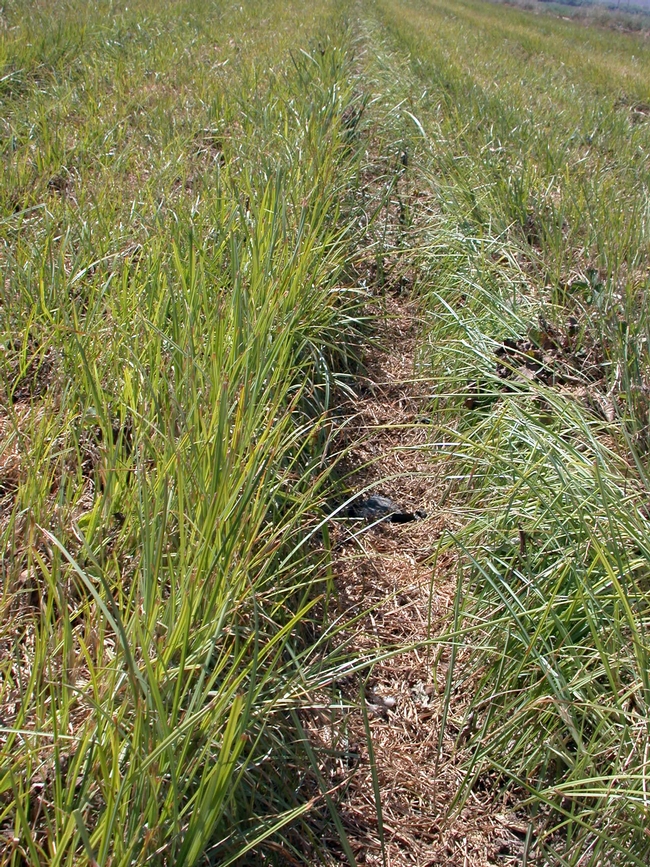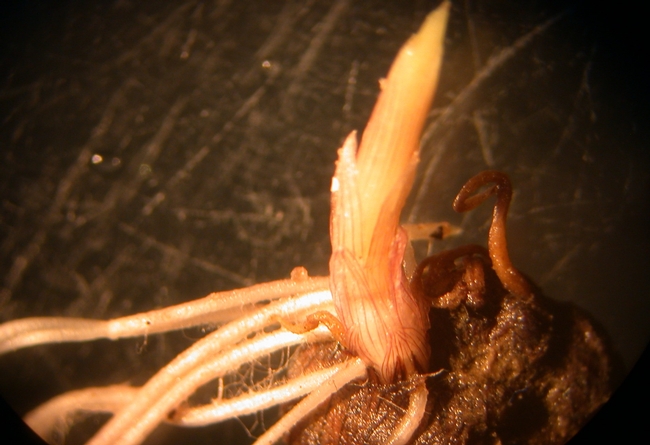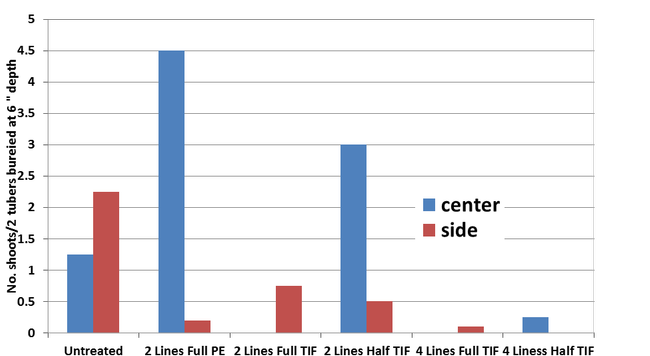Methyl bromide fumigation kept the nutsedge in check for strawberry growers, and when methyl iodide came along it was an equally effective replacement, but both of these fumigants are now gone. There are no herbicides registered for strawberry that control nutsedge and in the absence of management tools this perennial weed is doing great in warm fertigated strawberry beds.
Alternative fumigants are partially effective. In fact, they do kill nutsedge very well when in direct contact with non-dormant, germinating tubers. However, they are applied via drip and the further from drip tape you go in the bed the greater is likelihood of weed survivorship. We saw this with VAPAM (MITC-generator, 50 Gal/acre) end-season application. Strawberry plants are mowed and fumigant is injected into drip intending to ‘clean-up' pathogens and weeds that were building up their populations for 9 months. Under the drip tape no tuber germination was observed at depths from 0 to 12” while in areas between tapes up to 34% of tubers survived and produced shoots. To improve fumigant distribution we doubled number of drip tapes /bed in fall fumigation with chloropicrin (150 lbs/acre) under totally impermeable film (TIF) at full or half-rate.
The chart below shows that using four drip lines with TIF tarp was most effective, even at half rate while a standard of polyethylene (PE) film with two lines failed to control nutsedge at bed centers, an area most distant from fumigation lines.
Additionally, we tested Dual Magnum/DM (S-metolachlor) for three years as potential herbicide in strawberries, since it provides good nutsedge control in other crops, and these are the conclusions:
- Both yellow and purple nutsedge were controlled >95% in strawberry beds when DM was applied at 0.63-0.95 lb a. i. /acre rate to bed tops in fall prior to plastic tarp installation. We have not seen such efficacy in open field trials, so plastic encapsulating moist beds was likely beneficial. It was good to see the residual efficacy in spring in DM plots when nutsedge tubers in untreated checks continued to send shoots.
- Even though the injury symptoms were difficult to notice, the Ventana strawberry plants were slightly stunted after DM was applied at 0.63-0.95 lb a. i. /acre and had significant yield losses. Thus, in following trials we learned that rates as low as 0.33-0.48 lb a. i. /acres were nearly as effective and safe (no negative effects on yield) as higher rates.
Dual Magnum is on track to receive IR-4 label for strawberry, perhaps as early as next year, so we look forward to taking it to large scale infested fields, where the tubers of different age and at different bed locations are waiting.
Similar to some difficult to control soil pathogens, nutsedge will present a challenge to growers that will require use of multiple strategies for effective management; we hope to keep adding them to the toolbox.


